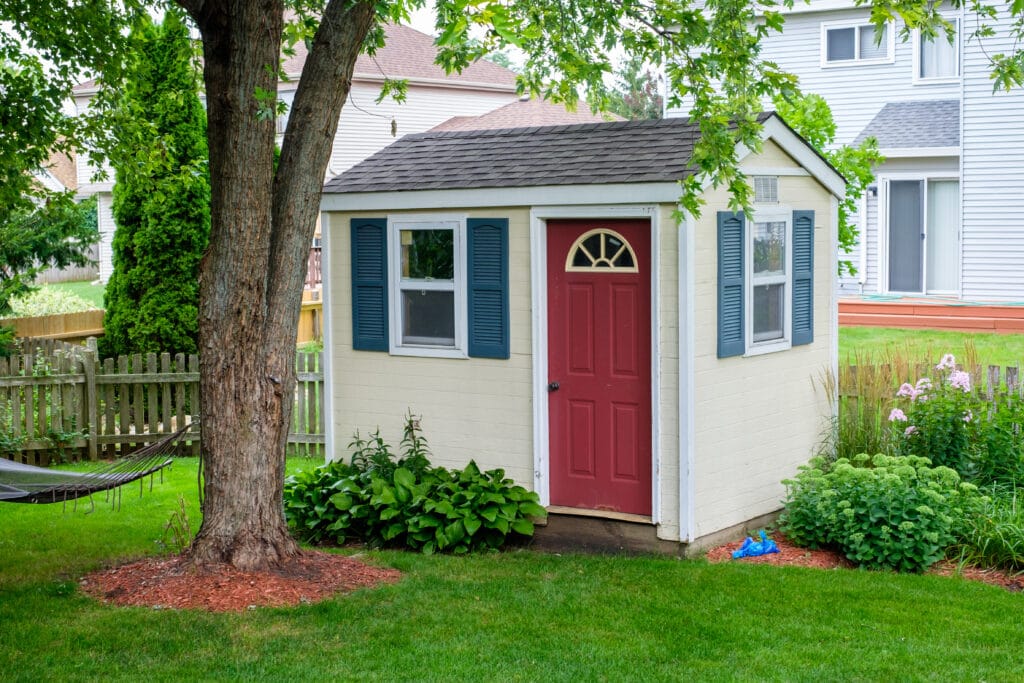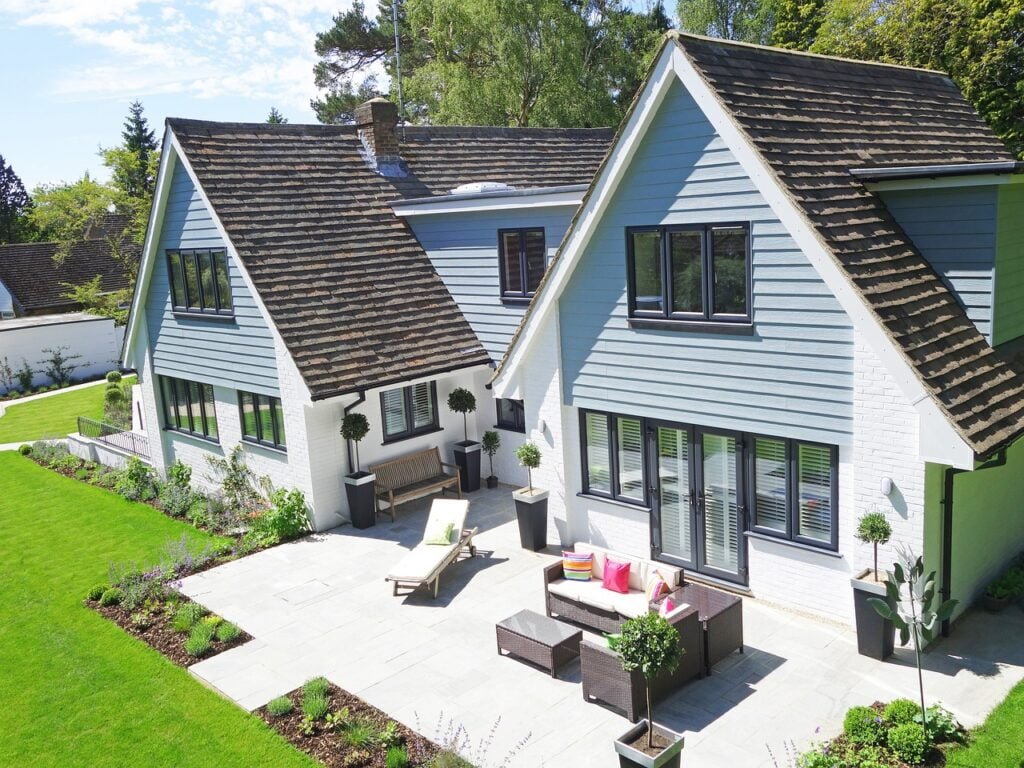What Happens if You Build a Shed Without HOA Approval?
.jpg_00.jpeg)
What happens if you build a shed without HOA approval? Failure to obtain HOA approval for building a shed can result in fines, legal action, and even the requirement to demolish the structure. This article outlines the potential consequences of constructing a shed without HOA approval, the steps needed to secure that approval, and the importance of obtaining it. Additionally, Opulent 3D Studio provides expert tips for building a shed that complies with HOA regulations.
Key Takeaways:
- Building a shed without HOA approval can result in fines, penalties, and even legal action from the HOA.
- The approval process for building a shed with HOA involves submitting plans, waiting for approval, and receiving an approval or denial.
- HOA approval is important for maintaining aesthetics, complying with building codes, and avoiding conflicts with neighbors.
- 3D Rendering Services can help the HOA approval process for building a shed.
Building a shed without HOA approval can lead to several consequences, including fines and penalties imposed by the homeowners association (HOA), the forced removal of the shed if it violates community regulations, and potential legal action from the HOA to enforce compliance.
Possible Fines or Penalties
What Happens if You Build a Shed Without HOA Approval? Homeowners who build a shed without obtaining HOA approval may face fines or penalties that can significantly impact their finances. The consequences of unauthorized shed construction can vary widely, with fines ranging from a few hundred to several thousand dollars, depending on the community’s regulations.
Many homeowners’ associations (HOAs) implement these measures to preserve the aesthetic integrity and property values of their neighborhoods, ensuring that all structures comply with established guidelines. Non-compliance can lead not only to fines but also to the mandatory removal of unauthorized structures, resulting in additional costs for the homeowner.
Common fines may include:
- First offense: $500
- Subsequent offenses: Up to $1,500 per incident
- Potential legal fees if the issue escalates
HOAs typically enforce compliance through periodic inspections and resident complaints, highlighting the importance of strict adherence to community standards.
Forced Removal of the Shed
The forced removal of a shed by the homeowners association (HOA) is one of the most unfavorable outcomes of building a shed without obtaining prior approval. This outcome not only disrupts the homeowner’s peaceful enjoyment of their property but also imposes significant financial and emotional burdens as they deal with the consequences of the removal.
Generic Process of Forced Removal
When faced with forced removal, the shed owner typically receives a formal complaint from the HOA. An investigation is then initiated to evaluate the situation, and the HOA may send various notifications outlining the details of the violation and the potential penalties. Homeowners should be aware of their rights during this process, which include the right to a hearing to present their case, the ability to appeal HOA decisions, and the opportunity to negotiate the terms of removal, including the timeline.
Financial and Emotional Costs of Forced Removal
Along with the financial costs associated with the forced removal of a shed, such as labor and disposal expenses, there are often emotional costs as well. A shed owner may experience feelings of frustration and helplessness—emotional distress that can linger long after the shed has been removed. Furthermore, homeowners may face property damage, depending on how the removal is executed.
Legal Action from HOA
In certain situations, a homeowners association (HOA) may sue homeowners who construct sheds without obtaining the necessary permissions. While legal action is typically viewed as a last resort, the HOA may take this step if members do not adhere to community standards.
Through litigation, the HOA aims not only to enforce compliance with its regulations but also to prevent any potential decline in property values within the community. Homeowners should be aware that this process may involve the following actions:
- Suing for damages incurred
- Seeking injunctions to halt ongoing or future violations
The outcomes of these legal actions can vary significantly. Successful associations may recover their legal fees and compel the homeowner to comply with HOA rules, whereas failure to succeed may result in additional costs. It is crucial for homeowners to understand and follow HOA regulations to avoid such circumstances.
What is the Approval Process for Building a Shed with HOA?
.jpg_01.jpeg)
The approval process for building a shed with a Homeowners Association (HOA) involves several essential steps that homeowners must follow to ensure compliance and avoid potential issues.
First, homeowners must submit their plans and designs for the shed construction, which should include the intended dimensions, materials, and overall appearance of the shed. This submission typically includes design renderings and installation drawings, helping the HOA understand how the shed will fit into the community’s aesthetic.
Submitting Plans and Designs
The first step in obtaining HOA approval for shed construction involves submitting plans and designs. Residents must provide a complete set of architectural drawings that clearly illustrate the proposed structure’s dimensions and appearance, making it easy for reviewers to evaluate.
It is important to specify the materials that will be used, as these can significantly impact both the aesthetic and durability of the shed. Precision in measurements within the submission documents can help prevent disputes or misunderstandings with the HOA.
To facilitate proper evaluation, the following elements should be included:
- Detailed architectural drawings showing the shed from all angles and its relationship to surrounding structures,
- Material specifications such as wood type, roofing materials, and siding,
- Exact measurements, including height, width, and depth.
Ultimately, clarity and adherence to established HOA requirements will increase the likelihood of approval and ensure that the project aligns with community standards.
Waiting for Approval
Homeowners must wait for the HOA to review and approve their plans and designs after submission. The average time for this approval can vary significantly depending on community rules and the number of requests in the queue, but it typically ranges from a few weeks to a few months.
During this waiting period, homeowners should understand that the HOA’s review process is thorough and intended to ensure that all projects comply with community standards.
Homeowners can check the status of their request by either emailing or logging into the HOA’s online portal, which usually includes a feature for tracking submission status. Staying informed can bring peace of mind.
Clear communication throughout this process is essential. By remaining patient and respectful, homeowners can foster a positive relationship with HOA representatives, ultimately benefiting future requests.
Receiving Approval or Denial
The final step in the approval process for a shed construction project is receiving either approval or denial from the Homeowners Association (HOA). Once homeowners receive approval, they can proceed by scheduling construction and obtaining any necessary permits. It is important to keep the HOA informed about the construction timeline. Homeowners should also consider hiring a reliable contractor to ensure that the construction complies with local laws and HOA guidelines. Careful planning at this stage can help eliminate potential issues later on.
In case of a denial, homeowners have the option to enter the appeals process. It is crucial to thoroughly review the HOA’s specific reasons for the denial and make the necessary adjustments to the plans. This may involve:
- Consulting the HOA guidelines to identify required changes,
- Revising architectural plans to address specific concerns, and
- Requesting a follow-up meeting with HOA representatives for further discussion.
By adhering to these requirements, homeowners can enhance their chances of a successful resubmission and align their plans with the community’s vision.
Why is HOA Approval Important for Shed Construction?
.jpg_10.jpeg)
Obtaining HOA approval for shed construction is crucial as it ensures compliance with the community’s standards and helps maintain the overall aesthetics and property values within the neighborhood.
By adhering to HOA guidelines for shed construction, homeowners contribute to a cohesive and visually appealing environment, which can enhance property values and increase community satisfaction.
Additionally, securing HOA approval minimizes the risk of facing potential fines, penalties, or disputes with neighboring properties, making it an essential step in the shed construction process.
Maintaining Aesthetics and Property Values
One of the primary reasons homeowners should seek HOA approval for their shed design is to maintain aesthetics and property values. A well-designed shed not only enhances an individual property but also significantly contributes to the overall visual appeal of the neighborhood. When homeowners invest in thoughtful construction that aligns with community standards, they elevate the charm of the entire area.
For example, a beautifully crafted shed can complement the architectural style of nearby homes, creating a cohesive appearance that attracts visitors and potential buyers alike. Utilizing shed renderings can help visualize this harmony beforehand. Conversely, non-compliant structures can have a detrimental effect; an unattractive, poorly built shed may stand out negatively, drawing attention for all the wrong reasons.
This can detract from the neighborhood’s aesthetic, potentially lowering property values and making it harder to sell homes in the vicinity. Consider the impact of an oversized or mismatched structure. A visually unappealing shed can undermine the community’s charm, and it’s important to reflect on the long-term effects of non-compliance on neighborhood appeal.
Ensuring Safety and Compliance with Building Codes
Safety and compliance with local building codes are crucial reasons for obtaining HOA approval for shed construction projects.
When building a shed, it is essential to familiarize yourself with the specific neighborhood regulations that dictate what can and cannot be constructed. Parameters such as property lines, height restrictions, and design aesthetics are defined by the homeowners’ association (HOA) governing the area. Adhering to these standards fosters goodwill among neighbors and contributes to a safer and more structurally sound community.
- Compliance minimizes the likelihood of future fines or disputes with neighbors.
- HOA approval provides assurance that any construction project meets at least some level of local building codes.
It is evident that obtaining HOA approval is more than a simple administrative requirement; it is a necessary aspect of responsible home construction.
Avoiding Conflicts with Neighbors
Obtaining HOA approval before starting the construction of a shed can help prevent conflicts with neighbors. Engaging in discussions about your construction plans fosters a sense of community and understanding, ultimately enhancing neighborhood relationships. Clear communication is essential in minimizing misunderstandings related to property lines and aesthetics. By involving those in the surrounding area in the decision-making process, you can build goodwill and avoid potential disputes.
This can be achieved through several key communication strategies:
- Be Transparent: Clearly share your plans and timelines with your neighbors so they know what to expect.
- Invite Feedback: Encourage neighbors to express their concerns and thoughts openly.
- Respect Boundaries: Ensure that your construction does not infringe on their property boundaries.
- Stay Open-Minded: Be willing to adjust and modify your plans if necessary.
By maintaining open communication, you can enhance your property while preserving a positive relationship with your neighbors.
How to Avoid Issues with HOA Approval? What Happens if You Build a Shed Without HOA Approval?

To avoid issues with HOA approval, homeowners should familiarize themselves with the specific rules and regulations that their homeowners association has regarding shed construction. Understanding these guidelines helps ensure a smoother approval process and increases the likelihood of receiving project approval. It’s essential to know what happens if you build a shed without HOA approval to avoid complications.
Involving the HOA early in the process and seeking professional assistance can provide homeowners with valuable insights into the approval process, setting them up for success.
Familiarize Yourself with HOA Rules and Regulations for Shed Construction
The first step to ensuring compliance in the shed design and approval process is to familiarize yourself with the HOA rules and regulations. Homeowners can typically find these guidelines on the HOA’s official website or by directly contacting the HOA office. It is crucial to identify the specific sections related to outdoor structures, particularly sheds, to understand the criteria that must be met.
Look for restrictions on size, as many associations impose strict limits based on the overall aesthetics of the neighborhood. Review the permissible materials for construction, as some HOAs may require the use of materials that blend with existing homes. Additionally, pay attention to design aesthetics, such as color schemes and architectural styles, which are often specified to maintain community uniformity.
By thoroughly exploring these details, you can ensure that your shed not only meets community standards but also enhances your property value, aligning with the overall vision of the neighborhood.
Communicate with HOA Board and Neighbors
Effective communication with the HOA board and your neighbors is essential for obtaining approval for shed construction. Building relationships with those involved is crucial in fostering a supportive environment and addressing any concerns. Engaging with members of your HOA board can provide valuable insight into their perspectives and help you better understand the community’s regulations.
Actively participating in discussions can clarify guidelines and facilitate conversations about potential changes to your plans. To encourage these discussions, consider the following actions:
- Organize informal meetings to share your ideas.
- Utilize neighborhood social media platforms to solicit feedback.
- Attend board meetings regularly.
By taking these steps, you promote collaboration, leading to a more harmonious decision-making process and a community that values the input of all its members.
Seek Professional Advice and 3D Rendering Services for Shed Design
Utilizing professional design assistance and 3D rendering services can significantly enhance the likelihood of obtaining HOA approval for shed designs. These services can provide detailed 3D renderings for shed design and shed renderings that align with community standards. Engaging experts in shed design positively impacts the chances of approval, as these professionals bring valuable knowledge and experience that can ensure compliance with local regulations while enhancing the aesthetics of the structure. By guaranteeing that the design adheres to all relevant regulations, professionals help minimize the risk of rejection by the HOA.
Furthermore, the inclusion of 3D renderings of shed designs improves homeowners’ ability to visualize their designs and addresses any concerns that HOA members may have. This clarity is essential for securing approval and enhances the likelihood of success in several ways, including:
- Demonstrating the shed design in relation to its surroundings
- Highlighting components of the shed that align with the neighborhood’s intended aesthetic
- Enhancing communication between the homeowner and the HOA
These visual representations often lead to quicker approvals and a smoother approval process, making the investment in professional assistance worthwhile.
What Happens if You Build a Shed Without HOA Approval Wrap up
Understanding how HOA approval impacts shed construction is crucial for homeowners to avoid fines, disputes, and potential lawsuits. Proper shed design renderings and detailed shed construction plans help in obtaining quick approvals. Obtaining the necessary approvals in advance helps to ensure a smooth construction process and fosters a harmonious community.
The HOA approval process typically involves submitting plans, adhering to design requirements, and receiving feedback within a specified timeframe. Homeowners can enhance their chances of securing the required approvals by following guidelines and complying with zoning regulations.
Proactive Tips for Homeowners:
- Review HOA rules and regulations regularly.
- Prepare detailed project plans that demonstrate design compatibility.
- Communicate with neighbors to address any concerns proactively.
By being diligent and engaged in your planning, you can prevent common shed construction issues, such as disputes over property lines or differences in architectural styles.
Explore various shed design options and consider 3D renderings for shed design to visualize your project accurately.
Frequently Asked Questions
Building a shed without HOA approval can result in costly consequences, including fines, forced removal of the shed, and legal action against you.
No, it is not advisable to build a shed without HOA approval. Most HOAs have strict guidelines and regulations for construction projects, and failure to follow them can have serious repercussions.
es, you do. HOAs have the authority to regulate and approve any changes or additions to the community, including shed construction and shed design. It is always best to consult with your HOA before starting any construction project.
If you have already built a shed without HOA approval, it is best to disclose this to your HOA and seek their approval after the fact. There may be a chance that they will allow the shed to remain based on shed renderings, but it is not guaranteed.
Even if your shed meets all the HOA guidelines, it is still necessary to get approval before building. HOAs have the final say in any construction projects, and failure to get approval can still result in consequences.
Yes, you can. If your HOA denies your request for a shed, you can appeal their decision and present your case to the board. However, keep in mind that their decision is final, and it is best to work with them beforehand to avoid any conflicts.

Stay Connected with Opulent 3D Studio
Don’t miss out on the latest from the world of 3D rendering! Follow Opulent 3D Studio on our social media platforms. Stay updated with our recent projects, industry insights, and behind-the-scenes peeks into our creative process. Connect with a community of 3D rendering enthusiasts, share your thoughts, and be part of our growing network. Find us on:

